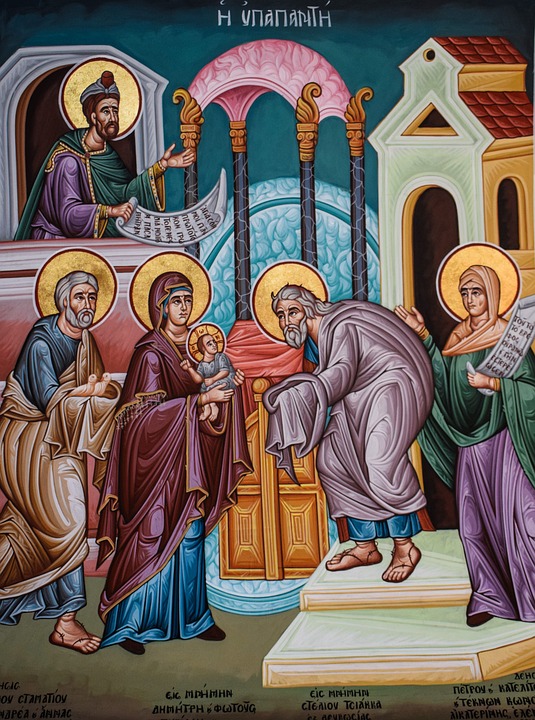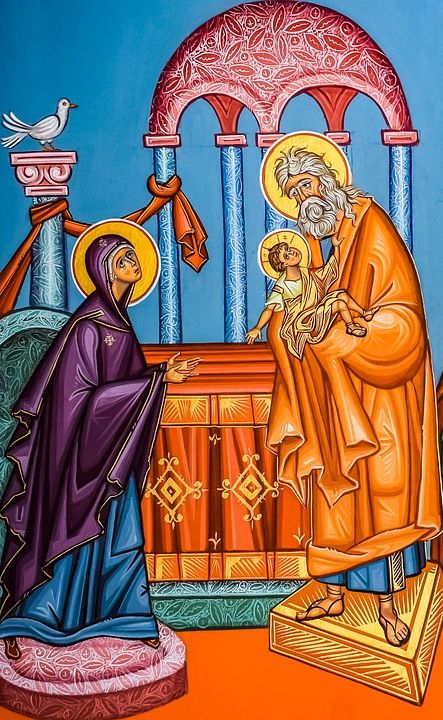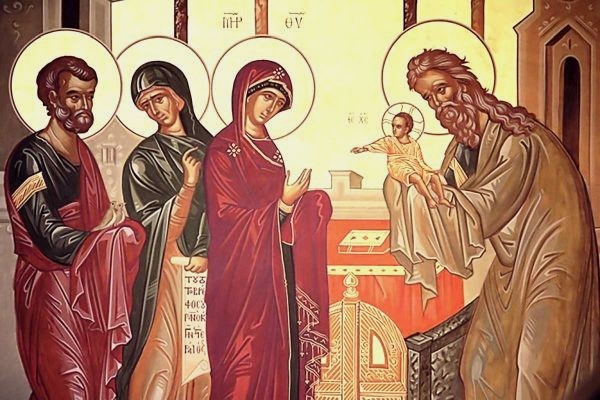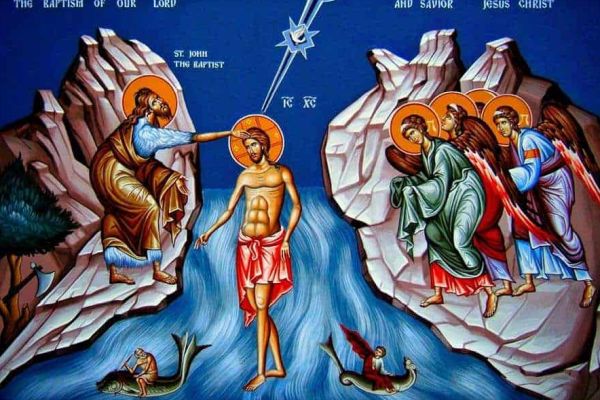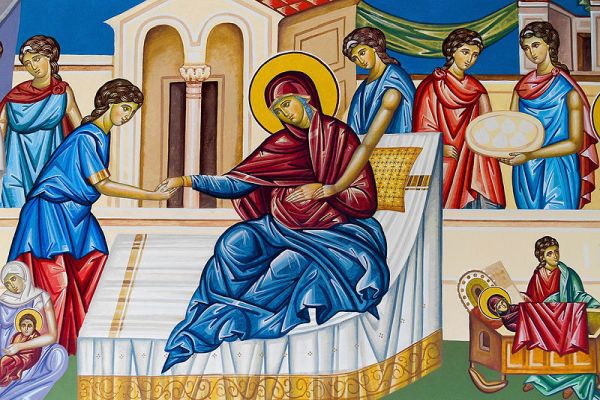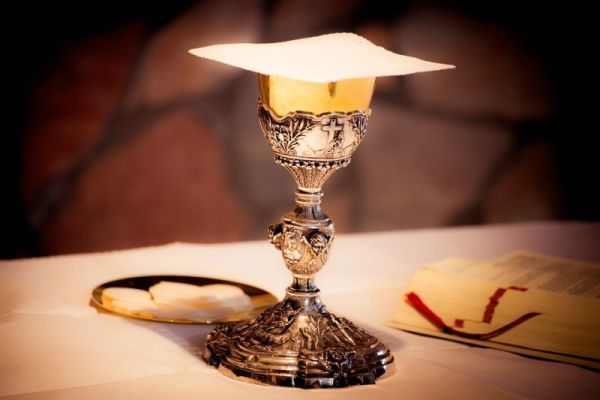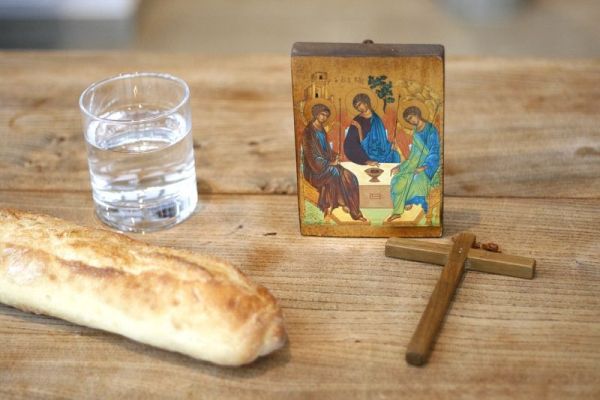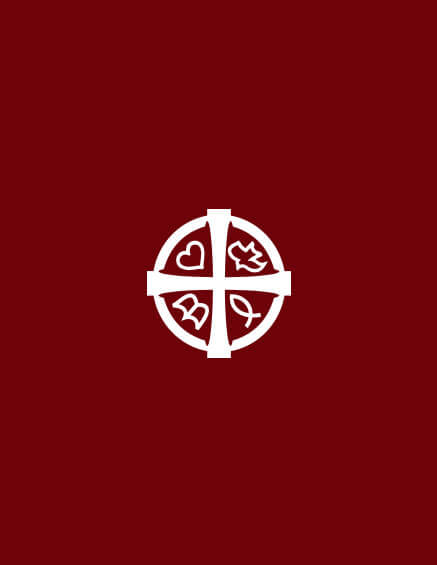The Feast of the Presentation of Christ in the Temple
Held on February 2nd, the Feast of the Presentation of Christ1 is one of the 12 Great Feasts of the Orthodox Church. It commemorates the important event in the earthly life of our Lord and Saviour Jesus Christ, in which His parents presented Him 40 days after His birth, to the Temple, in accordance with the requirements of the Jewish laws2.
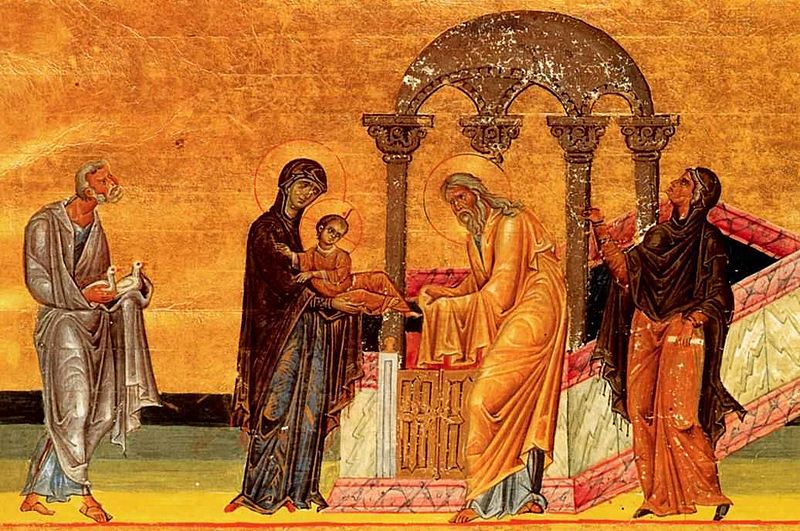
The Event – St. Luke 2:22-40
When his parents then took the Infant Jesus to the Temple in Jerusalem, they were met by two holy people, the prophetess Anna and the elderly Simeon – who had been promised by God that he would not die until he had witnessed the coming of the Messiah. By the inspiration of the Holy Spirit, both Anna and Simeon recognized Christ as the Messiah and Savior of the world3.
Icon of the Feast
The icon shows the presentation of Christ took place inside the Temple, in front of the altar4. Along with St. Joseph, the Theotokos stands to the left and is holding her Son, extending her hands to give Him to St. Simeon5 who stands alongside the prophetess Anna.
As in all icons, Jesus is here depicted with the usual halo containing a cross. St. Joseph stands behind the Theotokos, carrying two turtle doves which was the option allowed by the law for the poor to offer as a sacrifice6.
Significance of the event
The event of the Presentation of our Lord in the temple is also significant for many reasons. Firstly, this is the first meeting of God incarnate with His people. Secondly, in reaffirming the humanity of Christ, this feast is the fulfilment of God’s promise of the Jewish Messiah, the Light for the Gentiles. It is interesting to note that the Giver of the Law, the Word of God through Whom the world was created, now Himself fulfils the Law, and is now held as an infant in Simeon’s hands.
Scripture readings for the Feast
The Old Testament readings that are selected for the feast have to do with the themes of the Passover, the purification rites after childbirth, the redemption of the first born as well as the prophecies of the Jewish Messiah.
The Gospel reading is from Luke 2:25-32, and talks about how St. Simeon receives Christ.
The Epistle reading is from Hebrews 7:7-17, and tells of a change in the priesthood from the Levitical order to the order of Melchizedek.
Two special customs related to this event from the early church:
a) Holding candles – As a symbol of St. Simeon’s reference that Christ is the light of revelation for the Gentiles, from the 5th century onwards, the faithful began the custom of holding lighted candles during the Divine Liturgy of this feast day.
b) Churching of Women – Following the pattern found in scripture, the early church asked women to come to the Church, 40 days after childbirth. Special prayers are made in thanksgiving for the physical safety of the mother, and then the infants are also made ready to be presented to the Lord for baptism and chrismation and so made ready for their first Holy Communion. By doing this, the parents publicly declare that their children were given life by God and so will be dedicated for the glory of God. After the presentation, the priest then hands the child back to the parents so that they as stewards will raise the children in the fear of God.
How to prepare myself for celebrating this feast?
Am I prepared to meet my Lord? This feast reminds us that, our Lord will reveal Himself to those who are pure and wait expectantly to meet Him, just like St. Simeon and St. Anna. The prayers and songs of the service should remind us that we are also called to meet with the Lord regularly and recognize Him for who He is.
What shall I bring when I meet my Lord? There is no gift can we give to the King of the Universe that He does not have already, except ourselves. All we can give Him is our very own lives. During this feast, the Church calls each one of us to make ourselves a Temple of God, where the Holy Virgin can bring her Divine Child, and so we can become the holy dwelling places of God.
What should be my prayer?
“”Lord, now let your servant depart in peace, according to your word; for my eyes have seen your salvation which you have prepared in the presence of all peoples, a light for revelation to the Gentiles, and for glory to your people Israel”. (Luke 2:29–32)
This prayer, sung by St. Simeon, which is used commonly during the Feast, is more than a description of someone who has been allowed to see and hold the Christ child requesting a peaceful departure. It should also mean for us, that having seen and touched the Saviour, we are released from the hold that sin has on us, and in peace, we can leave the realm of evil.
This prayer is a profound recognition of who Christ was and what His mission would be. This should motivate us to keep our focus on the mission of the Church and continue to tell others about the love of Jesus.
Some of the profound hymns of this feast:
“Christ the coal of fire, Whom Isaiah foresaw, Now rests in the arms of the Theotokox, As in a pair of tongs, And He is given to the Elder". "Come and with divine songs Let us also go to meet Christ And let us receive Him Whose salvation Simeon saw. This is He whom David announced, This is He whose words the prophets uttered, Who for our sakes has taken flesh, And speaks to us in the Law. Let us worship Him".
1This feast is also called as the ‘Feast of the Purification of the Virgin’ or sometimes referred as to the Synaxis or Hypapante (Greek for meeting) of our Lord. The Western Churches additionally call this feast as ‘Candlemas’, due to the custom of blessing candles on this day.
2 According to the Old Testament Law, a mother who had given birth to a son was considered unclean for seven days from the time of giving birth, and she had to undergo a ceremony of ritual purification forty days from the date of childbirth (Leviticus 12:2-8).
3Simeon then uttered the prayer that would become known as the Nunc Dimittis, or the Canticle of Simeon, which prophesied the redemption of the world by Jesus. (Luke 2:29–32).
4The altar usually has a book or a scroll on it and is covered by a canopy.
5 In lot of icons, you can see St. Simeon holding the infant Jesus with both hands covered with a cloth. This shows the reverence Simeon had for the Messiah.
6The actual offering prescribed was a lamb but those who couldn’t afford this could offer turtle doves instead. This tells us that the Lord Jesus came from a poor family.
